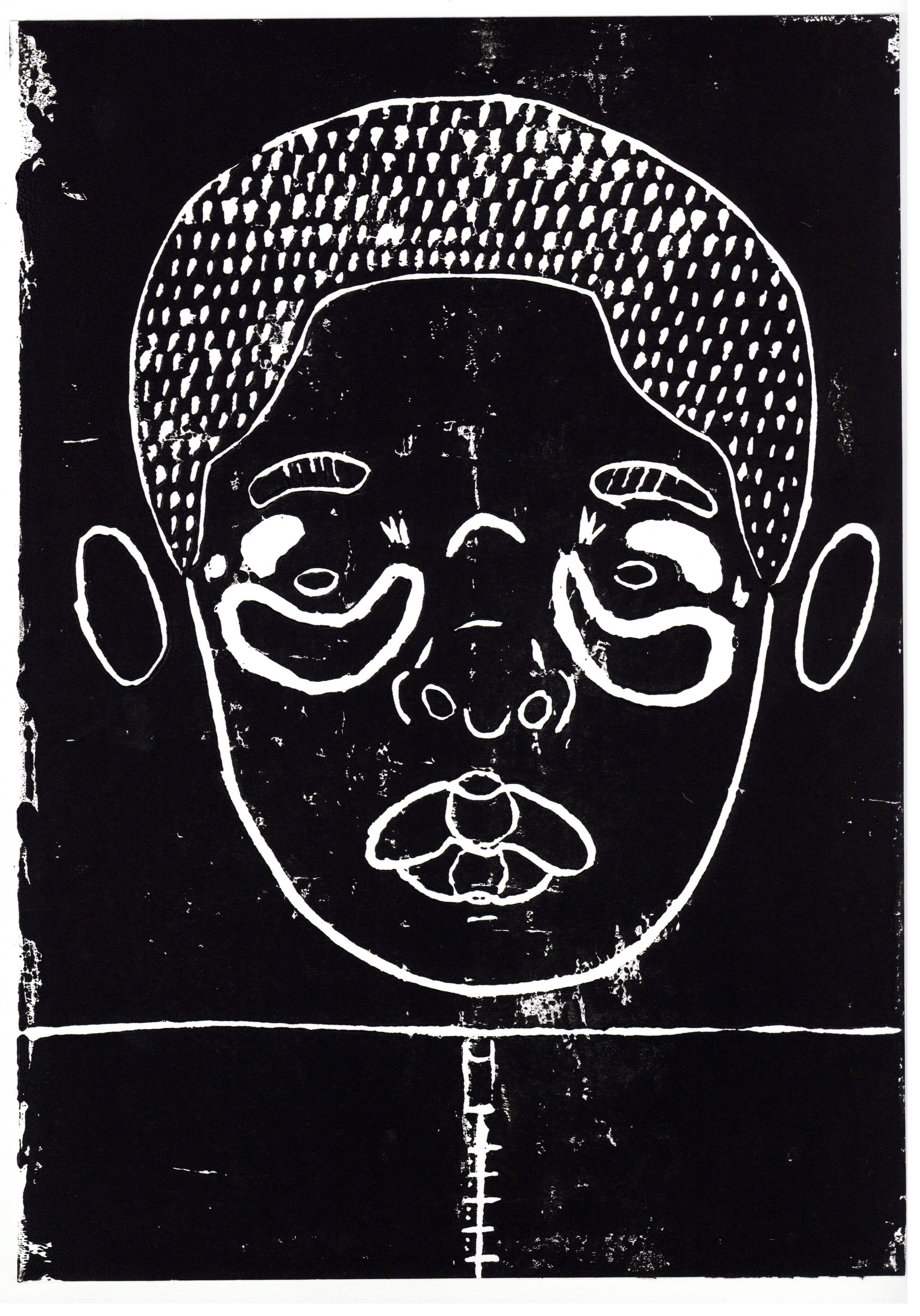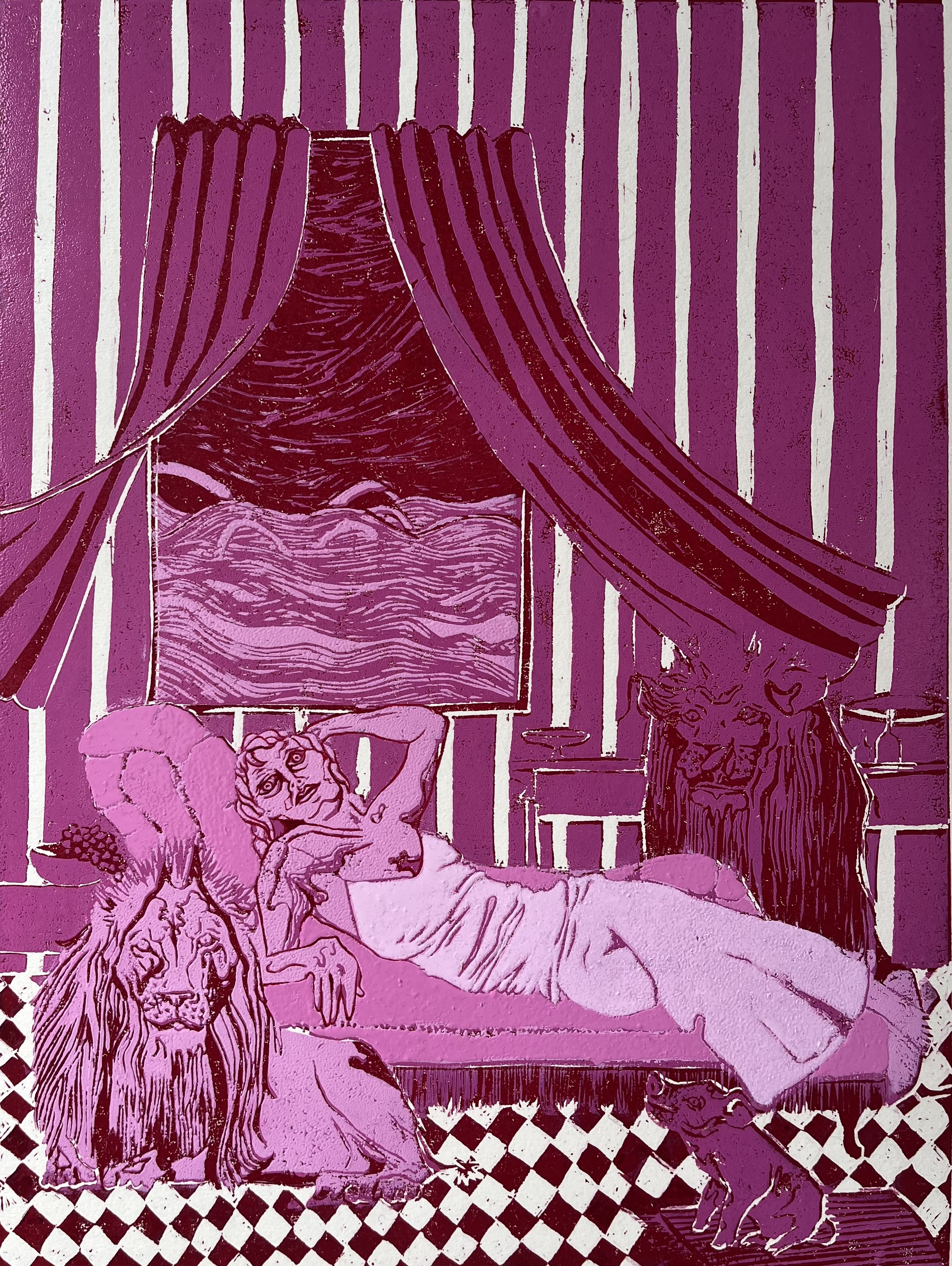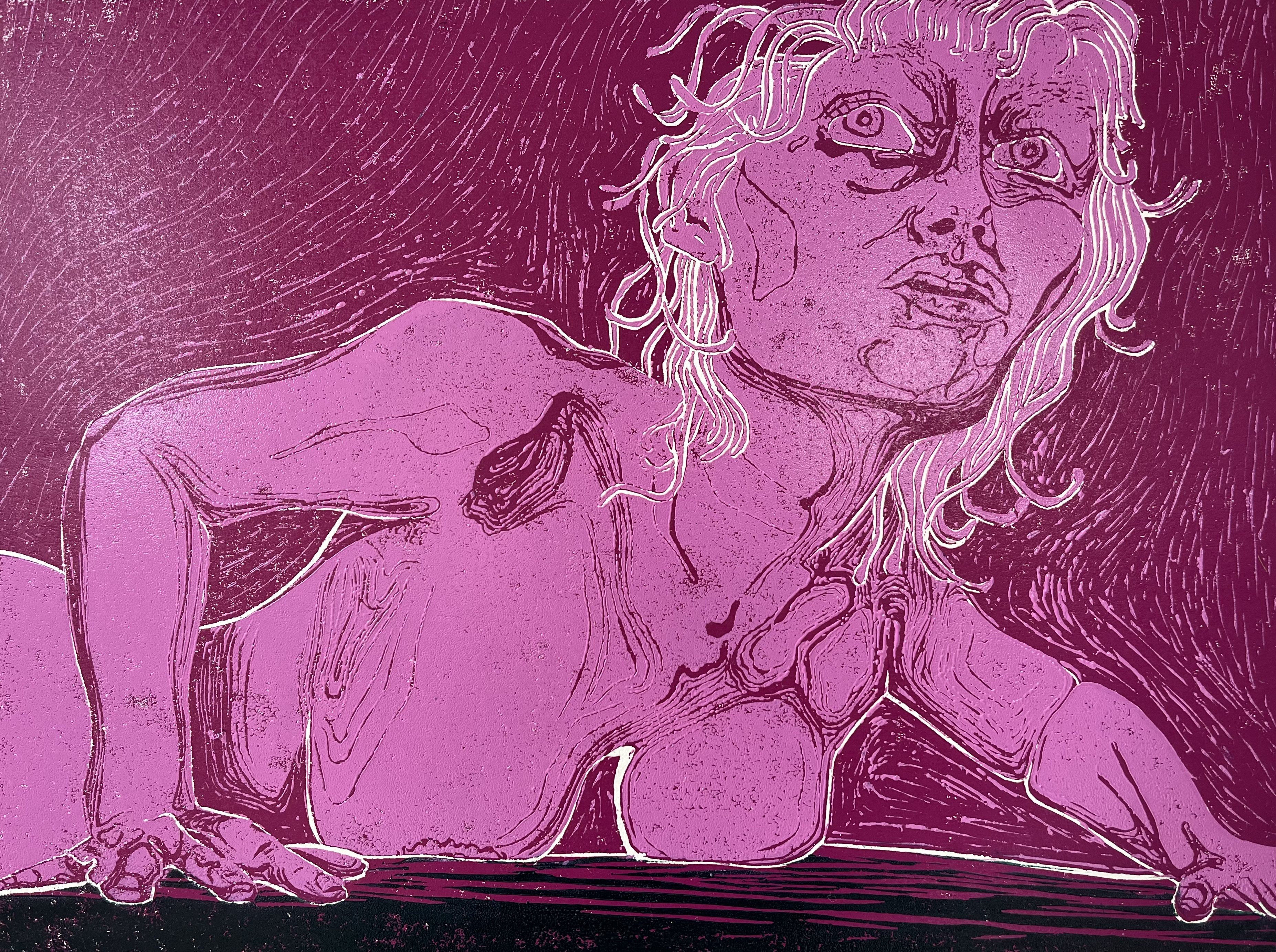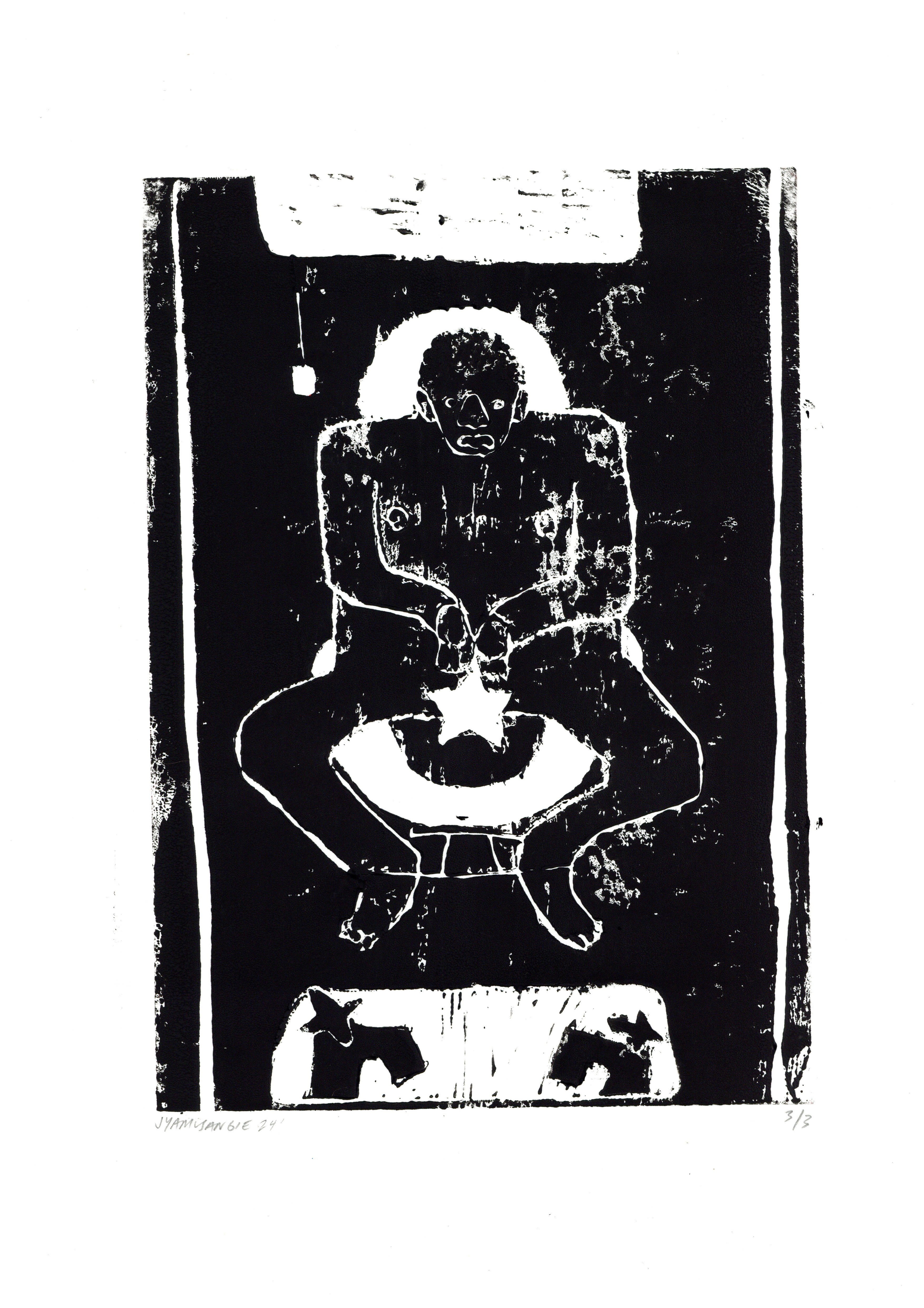RHODES Editions features two artists who work in the medium of lino cut printing: Joy Yamusangie and Hattie Malcomson. A brief exploration of this printing method adds a new layer of understanding to their artworks.
Linocutting is a printmaking technique in the category of relief printing. The name "lino" comes from the linoleum medium into which the image is carved. This carving is done with special gouges and tools, each creating lines of different textures and widths. The raised, uncarved areas of the lino make up the printable surface, while the carved areas remain ink-free—hence the category of relief printing; the "reliefs" create the image. Ink is applied to the uncarved areas with a roller, known as a brayer, and then transferred onto the canvas either manually or by machine pressing. The relief print can have multiple layers added or be left as a single monochrome print.

Signed, Dated and Numbered in Pencil Verso
11 3/4 x 8 1/4 in
Linocutting is a very popular form of relief printing due to its accessibility. Other printmaking methods within relief printing often involve more complex techniques to create the relief, such as woodcutting. Linoleum, however, is very soft and malleable, making it perfect for artistic experimentation. The process produces high-impact designs through the ink layers while allowing for smaller details created by the carvings. This contrast is highlighted in Hattie Malcomson’s print Circe in Aeaea (Red) (2024). Malcomson’s four-layer linocut print takes full advantage of the characteristics of linocutting, with bright planes of colour contrasted by intricate lines, making every harsh detail stand out.

On Stockwell Drawing Cartridge Paper 200gms
16 3/8 x 12 3/8 in
Linocutting, or linocut printmaking, has a relatively modern history compared to traditional relief printing methods like woodcut. Linoleum itself was invented in the 1860s for use as flooring, but it wasn’t until the early 20th century that artists began using the material for printmaking. By the 1910s and 1920s, European avant-garde artists, particularly in Germany and Russia, started experimenting with linocuts.

The German Expressionists, such as those in the Die Brücke movement, embraced the bold qualities of linocut prints. Die Brücke’s radical message was channelled through stark, monochromatic prints, and this design aspect of linocutting is seen in Joy Yamusangie’s print They Think I Don’t Belong Here, But I Know I Do (2024). Utilising the graphic-design qualities of linocutting with bold lines and minimal colour, Yamusangie prioritises the print’s narrative over its format. The title and subject reflect Yamusangie’s non-binary identity, while the black and white color scheme emphasises the message of contrast and standing out.

For more information on the works mentioned or the artists, please email info@rhodeseditions.com





